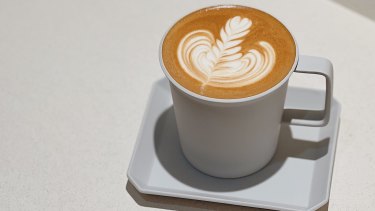$7 for a coffee? Tell them they’re dreaming!

You’ll be paying $7 for a coffee, $3 for a litre of unleaded petrol, and an extra $500 a month for a mortgage by the end of the year.
Those are all headlines that have appeared in recent weeks as experts warn about the threat of hyper-inflation.
Some of them may come true (in fact, I’d venture that all of them will come true at some point, the only question is whether it’s in 2022 or in the years afterwards).
If your café asks $7 for a coffee, tell them they’re dreaming! Try the place next door.
But there’s a strong chance that none of the three will transpire this year, even if they were all accurate estimates of the upper limit of what’s possible based on the data available at the time.
A funny thing happens when prices go up. The media warns people about it, consumers start to expect it, and then some businesses take advantage of it.
The RBA governor has been warning about “inflation psychology”, which can create a vicious cycle.
Senior economics writer Shane Wright explained it in this newspaper last week: “If consumers and businesses start believing inflation is here to stay, and respond by pushing up prices, the Reserve Bank has to lift interest rates. And the bank may have to take those rates higher – and hold them there longer – than if inflation expectations were more moderate.”
Columnist Ross Gittins wryly tweeted that “business must be grateful to the media for the way they’re beating up the prices-to-rise story. All the free advertising for firms to soften up their customers, exaggerate their cost increases, claim all other prices are rising & signal to competitors their intention to hike.”
Inflation is already here and there’s barely an expert in town who doesn’t expect it to be higher in March than it was three months ago. ANZ is predicting price growth of 4.2 per cent, for example.
But that’s not to say we have to accept it: the onus is now on us as consumers to spend our money more wisely.
If your café asks $7 for a coffee, tell them they’re dreaming! Try the place next door.
Shop around for baked beans or biscuits – both forecast to rise in price – by trying different supermarkets or home brands: not all brands hike prices at the same rate.
The number ‘2’ seems to be a useful money-saving barometer this month: if you look hard enough, there are still home loans under 2 per cent, petrol under $2 and health funds hiking rates by less than 2 per cent.
Ratecity reports that there are still seven fixed rates under 2 per cent, 172 fixed rates under 2.5 per cent and 70 variable rates under 2 per cent (some of these are actually coming down now).
For example, Geelong Bank is still offering 1.99 per cent fixed for two years, and six lenders including Unity Bank and G&C Mutual Bank still have one-year fixes under 2 per cent.
Compare the Market reports that in Sydney by the end of last week, there were still 19 stations charging under $2 for a litre of regular unleaded, and 53 stations over $2.20.
In Victoria, it was harder to find good fuel prices, with just four stations charging less than $2 and 53 stations charging over $2.20 in Greater Melbourne. So use petrol apps to find the cheap ones each day.
And if your health fund is hiking your premium next week by 4 per cent or 5 per cent, consider switching: the incentives to join a new fund now are as high as eight weeks free or $600 cashback over the first two years.
Joel Gibson is the author of KILL BILLS! The 9 Insider Tricks you Need to Win the War on Household Bills. Catch his money-saving segments on Nine Radio, TODAY & Twitter @joelgibson.
The Morning Edition newsletter is our guide to the day’s most important and interesting stories, analysis and insights. Sign up here.
Most Viewed in Money
From our partners
Source: Read Full Article

